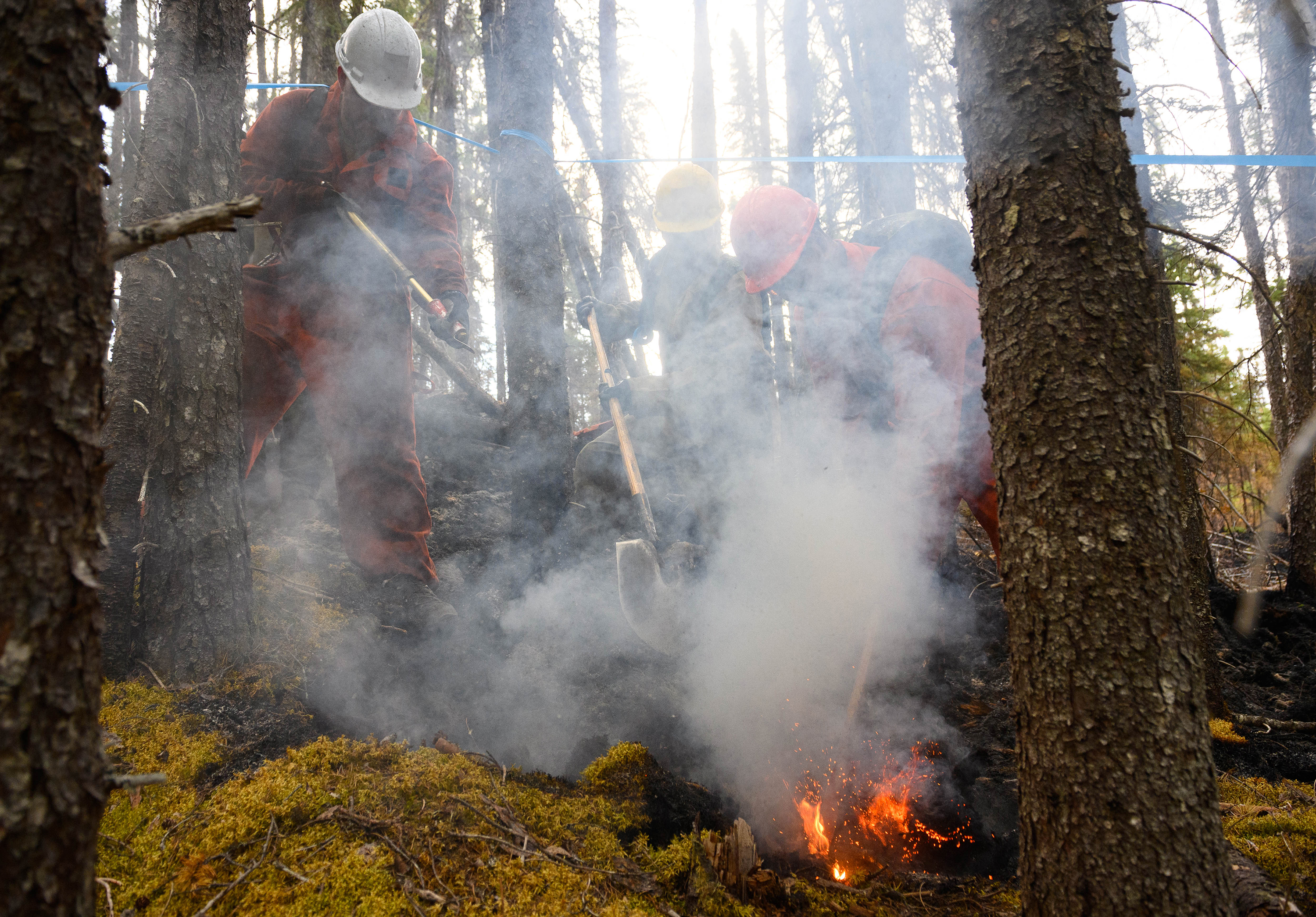Q&A: Canadian wildfires impact local air quality
CPH’s Olorunfemi Adetona shares tips for limiting exposure to contaminated air
By Kristen Mitchell

Health officials have repeatedly warned central Ohio residents to avoid spending time outside this summer as shifting winds carry smoke from Canadian wildfires south, harming air quality and blanketing the region in a haze, sometimes for multiple days.
Associate Professor Olorunfemi Adetona, who studies the links between wildfires and health, discusses the impact of smoke-filled air and what we should know as wildfire season rages on.

Question and Answer
How long should we expect to experience these air quality issues in our region related to the Canadian wildfires?
This is hard to predict and could be possible through the wildfire season in Canada, which peaks in the summer months and could last until November. Smoke transport and intrusion into Columbus and other parts of the United States from Canada is driven by many factors including the occurrence of wildfires, their location and intensity, how quickly they can be brought under control, and the general weather pattern.
Is there any precedent for what we’ve been experiencing here in Columbus?
There is no precedence in recent memory. Such poor air quality, in terms of the levels of air contaminants, has not been experienced in over a decade in Columbus, and has perhaps not occurred in decades in terms of the number of poor air quality days.
How much of what is going on is related to climate change?
I am unable to quantify how much climate change is contributing to fire activity. However, drought conditions (which are currently being experienced in Canada and the United States), high temperatures and increased lightning activity increase the risk for wildfires. Land management and conservation practices that are only geared toward wildfire suppression could also increase the risk of large wildfires that are difficult to control.
How bad is it to continue riding your bike, running or playing outside on days where an air quality alert is in effect?
Outdoor activity with high physical exertion such as bike riding or running will effectively increase the amount of smoke-related air contaminants people inhale. Those who have underlying cardiovascular and respiratory health conditions, the elderly and children may be particularly sensitive to bad air quality and could start to experience increased health risk once the United States Environmental Protection Agency’s Air Quality Index (AQI) is 51 to 100 (AQI considered to be of moderate concern and colored yellow). Health effects may be experienced by generally healthy individuals once the AQI is 151 to 200 (considered to be unhealthy and colored red).
Aside from restricting time outside, is there anything we should be doing to limit our exposure?
Limiting the intrusion of air contaminants from outdoors into the indoor environment when there is air quality alert, including closing doors and windows, is important. Central HVAC systems should be run with filters that have efficiency as high as the system can accommodate. It is advisable to close the fresh air intake if the HVAC has one and to run the HVAC in recirculation mode during periods of air quality alert. Portable air cleaners with high efficiency filters with appropriate square footage rating can also be operated in rooms or indoor areas.
Finally, N95 respirator masks could be worn to reduce exposure if activities must be conducted outside on days with an air quality alert or if options to filter or clean indoor air are limited. Alternative shelter could also be considered if options to filter or clean indoor air are limited.
It is important to continue to monitor the AQI for information about air contaminant levels during periods of possible wildfire smoke exposures. This can be done through the U.S. EPA’s AirNow.gov webpage by entering the relevant zip code into the textbox on the page.
Additional resources about wildfire and indoor air quality and indoor air filtration are available through the U.S. EPA.
About The Ohio State University College of Public Health
The Ohio State University College of Public Health is a leader in educating students, creating new knowledge through research, and improving the livelihoods and well-being of people in Ohio and beyond. The College's divisions include biostatistics, environmental health sciences, epidemiology, health behavior and health promotion, and health services management and policy. It is ranked 22nd among all colleges and programs of public health in the nation, and first in Ohio, by U.S. News and World Report. Its specialty programs are also considered among the best in the country. The MHA program is ranked 5th and the health policy and management specialty is ranked 21st.